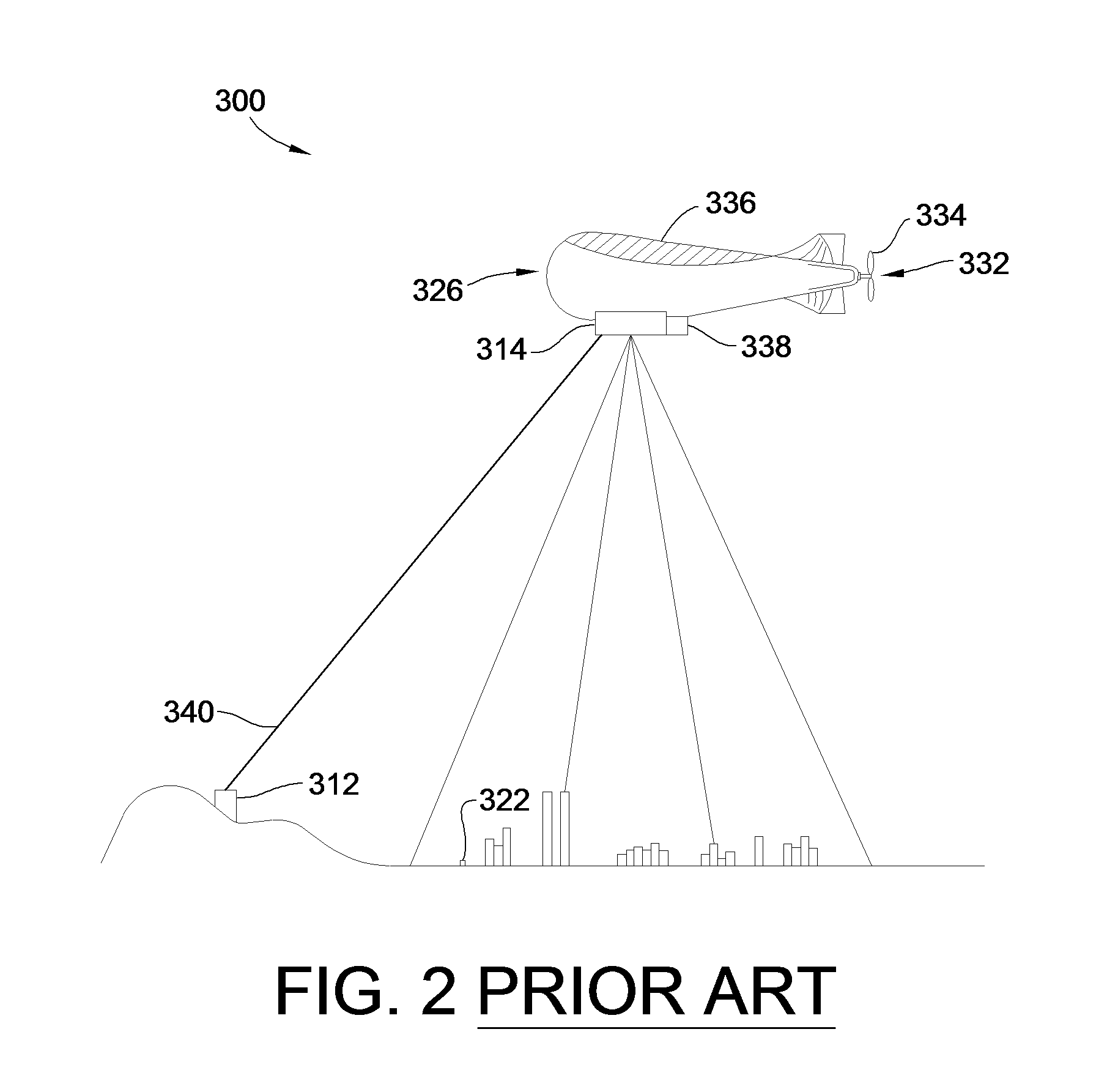Airborne basestation
a basestation and airborne technology, applied in the field of airborne basestations, can solve the problems of limited communication range of operation, limited system capacity, and high deployment and maintenance costs of land-based wireless infrastructures
- Summary
- Abstract
- Description
- Claims
- Application Information
AI Technical Summary
Benefits of technology
Problems solved by technology
Method used
Image
Examples
Embodiment Construction
[0036]As will be better understood from the following description, embodiments of the present invention are directed to an airborne communication system for providing broadband, multi-user communication within a network. Broadband communication provides efficient communication of voice, video and data. It should be noted that the following description will discuss various embodiments and environments in which such embodiment are preferably operated. However, such discussion is provided by way of example and not by way of limitation.
[0037]With reference to FIG. 3, a system 350 in accordance with an embodiment of the present invention uses a lighter-than-air vehicle 360 to provide relay broadband communication service among mobile units 378i or non-mobile units 379i in a coverage area or cell 380. The mobile units 378i can be ground vehicles such as illustrated by car 3781 or ambulance 3784, or water vehicles as illustrated by boat 3782, or air vehicles as illustrated by fixed-wing ai...
PUM
 Login to View More
Login to View More Abstract
Description
Claims
Application Information
 Login to View More
Login to View More - R&D
- Intellectual Property
- Life Sciences
- Materials
- Tech Scout
- Unparalleled Data Quality
- Higher Quality Content
- 60% Fewer Hallucinations
Browse by: Latest US Patents, China's latest patents, Technical Efficacy Thesaurus, Application Domain, Technology Topic, Popular Technical Reports.
© 2025 PatSnap. All rights reserved.Legal|Privacy policy|Modern Slavery Act Transparency Statement|Sitemap|About US| Contact US: help@patsnap.com



